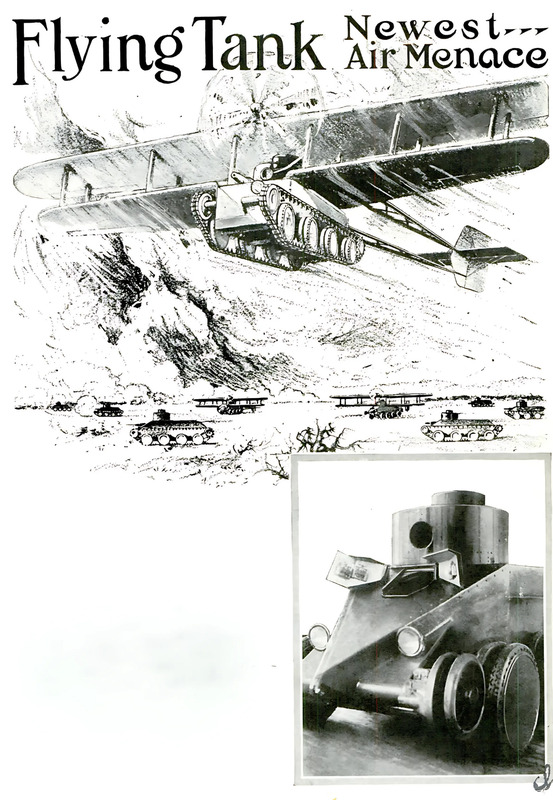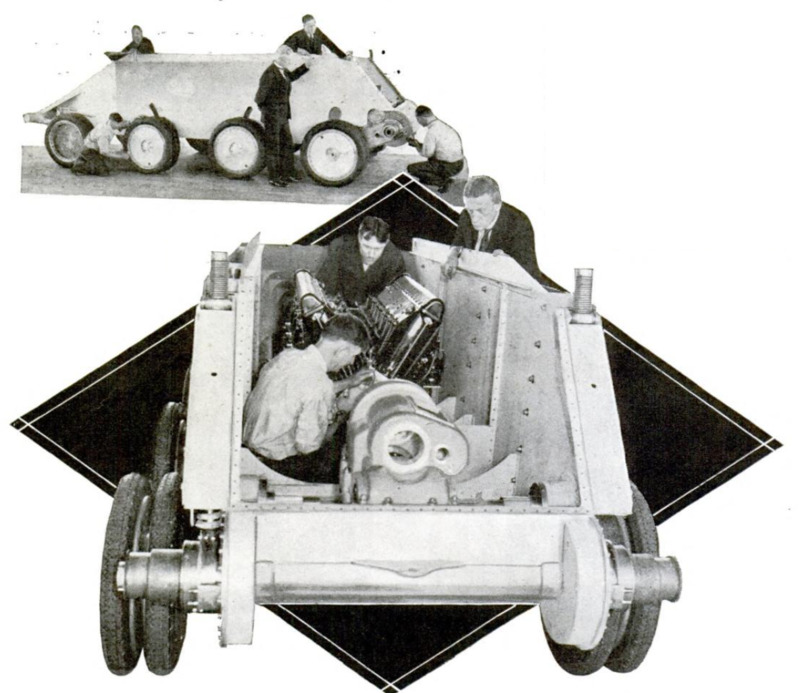Flying Tank
Contenuto
-
Titolo
-
Flying Tank
-
Article Title and/or Image Caption
-
Flying Tank. Newest Air Menace
-
extracted text
-
SCORES of big airplanes roar majestically over enemy territory without firing a shot or dropping a bomb; they swoop suddenly to earth, then zoom into the air again, leaving on the ground the queer shaped cockpits they had been carrying. The grounded cockpits, veritable small fortresses, move forward, seventy five, then eighty-five miles an hour, spitting death and destruction from machine guns. One hundred flying tanks, manned by just 200 men, would rout an army of several thousand. Such is the purpose of the flying tank. Behind closely guarded doors J. Walter Christie, inventor of many engines of war adopted by the United States government, has already assembled this squat and shiny engine of destruction and subjected it to tests so satisfactorily completed that a foreign power has offered an enormous sum for the plans, and U. S. army officers are eagerly waiting to make final tests. Small, compact, grim and ugly, the Christie tank weighs 11,000 pounds. It is so designed that it may be the fuselage of a plane whose wings are released when the tank touches the ground and goes into , action, or carried by large planes and released instead of bombs. The machine has springs that allow each pair of the six wheels to rise over a bump in the ground independently of the body of the tank, which may continue to travel on the other wheels, covered by their endless track. Slots cut in the undersides above the axles make possible this high degree of give of each pair of wheels. A 750-horsepower engine furnishes the motive power of the tank, and the inventor has installed it as a dual-purpose motor.
It may either be used to drive the tank forward or turn the propeller for flying. Mr. Christie has so designed this phase that, when a flying tank takes off, its driving wheels gather so much momentum within the first eighty to ninety yards that when the power is transferred to the propeller, the tank will go into the air within a hundred yards. "The take-off problem was the one of greatest difficulty to overcome in making an efficient flying tank," he said.
"Yet the light weight of the tank has been instrumental in solving it. So much so that I have incorporated a monoplane instead of a biplane design. What is more, the pilot of a flying tank does not need the level ground required by a bombing plane to take off. He can take off through mud, through bumpy ground and ground which would prevent the average plane from rising."
In landing the tank, the pilot will be equipped with special air and land-speed indicators. Coming down in a glide, he notes his air speed, transfers the power of his motor to his tank wheels, and when he notes their speed on his indicator, he lands the tank and either shoots forward to charge the enemy, dropping his wings by pushing a single lever, or slows it and stops within a remarkably short space by using the treads as a brake.
In cases where the tank is carried under big bombing planes, dual speed indicators are connected up in the flying tank proper and in the pilot's cockpit so that the tank operator knows just how fast to speed up his motor when the bomber deposits him on the ground. Independent of the three sets of pneumatic-tired wheels over which runs the tread, Mr. Christie has mounted two small sets of wheels, one fore and one aft, so that the tank may negotiate shell holes and trenches with the same facility as its big, cumbersome brother.
-
Lingua
-
eng
-
Data di rilascio
-
1932-07
-
pagine
-
5-7
-
Diritti
-
Public Domain (Google digitized)
-
Archived by
-
Alberto Bordignon



